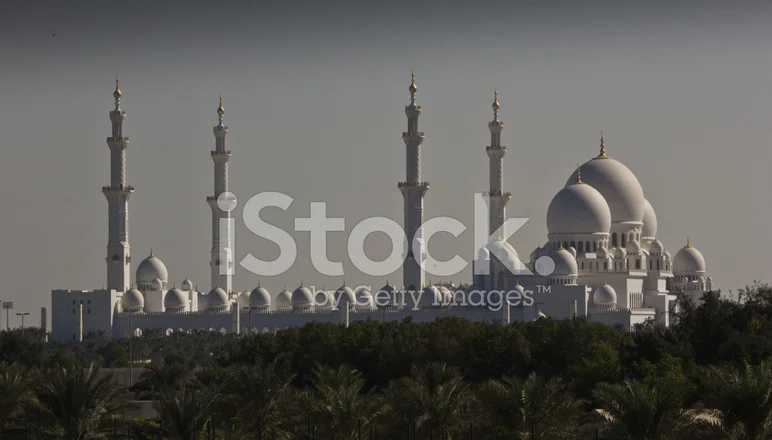Tracking Wealth Through the AI Lens
Tracking Wealth Through the AI Lens
I saw two stories cross my desk this week, and together, they paint a picture of the future so vivid it’s almost startling. On one hand, you have the New York Knicks and the Philadelphia 76ers, basketball giants, touching down at Abu Dhabi airport. They’re greeted with singing, handed beverages, and are soon posing with falcons on their arms. They’re playing preseason games at the stunning Etihad Arena, part of a global charm offensive that positions the UAE as a hub of culture, sport, and forward-thinking luxury. You see pictures of players riding camels in the desert and a team photo in front of the breathtaking Sheikh Zayed Grand Mosque, as reported in Knicks, 76ers explore Abu Dhabi before preseason doubleheader. It’s a perfect, curated postcard from the 21st century.
Then, almost in the same breath, I read another report. Two passengers caught at Mumbai’s airport, their bags stuffed with foreign currency—over a million and a half dollars—all of it destined for the UAE. Officials noted the identical methods, the simultaneous operations, the shared destination. It was a brief, almost sterile report about a shadowy financial pipeline, a world away from the flashbulbs and celebrity smiles of the `abu dhabi nba` games.
Most people would see these as two unrelated events: one a PR win, the other a minor crime blotter item. But I believe they are fundamentally connected. When I read these two stories back-to-back, it felt like a jolt of electricity—a sudden, clear glimpse into the source code of a future being written in real-time. These aren’t separate stories. They are two faces of the same ambitious, world-altering project.
What we’re seeing with events like the `abu dhabi games` or the `f1 abu dhabi` is the construction of a national brand on a scale we’ve never witnessed before. Think of Abu Dhabi not as a city, but as a meticulously designed operating system. The user interface—what they show the world—is flawless. It’s clean, intuitive, and breathtakingly beautiful. It has world-class apps like the Louvre Abu Dhabi, `nyu abu dhabi`, and state-of-the-art sports venues. The experience is seamless, whether you’re looking for `flights to abu dhabi` or booking a room in one of the spectacular `abu dhabi hotels`.
The Knicks and 76ers aren’t just there to play basketball; they are living, breathing advertisements for this UI. When Josh Hart holds a falcon, it’s not just a photo op. It’s a carefully crafted symbol of tradition meeting modernity, a signal to the world that this place is both deeply rooted and hyper-futuristic. This is nation-building as user-experience design. The goal is to attract the world’s best talent, the wealthiest tourists, and the most influential institutions. And by every metric, it’s working.

But this raises a profound question: what is the ultimate purpose of this perfectly polished interface? Is it simply to create a paradise on the sand, a global destination for culture and commerce? Or is it designed to distract us from the complex, and sometimes messy, code running underneath?
That’s where the second story comes in. The stacks of cash in those carry-on bags represent the backend, the raw processing power that makes the glossy interface possible. The UAE, and specifically cities like Dubai and Abu Dhabi, has positioned itself as a global hub for capital. It’s a place where money can move quickly, with fewer questions asked than in other financial centers. This has been a key part of its economic miracle.
This creates a duality. The same environment that attracts legitimate multinational corporations and sovereign wealth funds can also, inevitably, attract less transparent flows of money. This isn’t a bug in the system; you could argue it’s a feature. We’re talking about a system that prioritizes speed, growth, and ambition above all else—and the sheer velocity of that development is absolutely staggering, it means the gap between a patch of desert and a global metropolis is being closed faster than we can even fully process.
This is a form of regulatory arbitrage—in simpler terms, it’s about creating a set of rules that are more appealing to global capital than your competitors’. This is the engine. The money, from all its various sources, provides the fuel. The gleaming towers, the Grand Prix, the NBA games… that’s the glorious, fiery exhaust. Are we so mesmerized by the spectacle that we forget to ask what’s burning to create it? Can you build a stable, sustainable future when the foundation is, at least in part, a "no questions asked" policy on capital?
This is the central paradox of Abu Dhabi. It’s like a magnificent clock face, with diamond-studded hands moving with perfect, elegant precision. But behind the face is a powerful, frantic, and incredibly complex mechanism, a whirlwind of gears and springs we’re not meant to see. The two stories—the basketball stars and the currency smugglers—show us both the clock face and a glimpse of the machinery behind it.
So, what do we make of this? It’s easy to be cynical, to dismiss the gleaming towers as a facade built on shadowy money. But I think that’s too simple. What we’re witnessing in the UAE is a live experiment in building a post-national, 21st-century city-state. It’s a model that is both dazzlingly attractive and ethically complex. This isn’t just a story about `dubai and abu dhabi`; it’s a potential blueprint for how new centers of power will be built in an increasingly decentralized world. The old models of nation-building are being disrupted, replaced by something faster, more transactional, and built on the flow of global data and capital. The question we all need to start asking is not whether this model works—it clearly does. The question is, what kind of world does this model create?